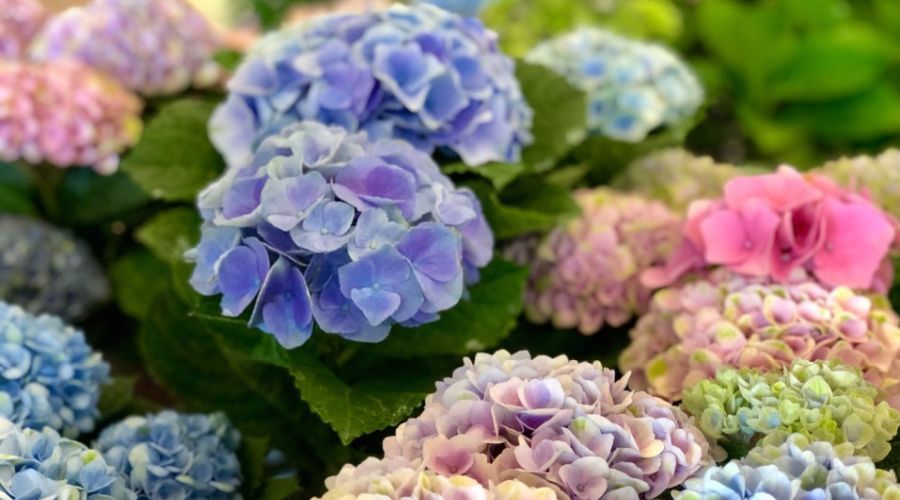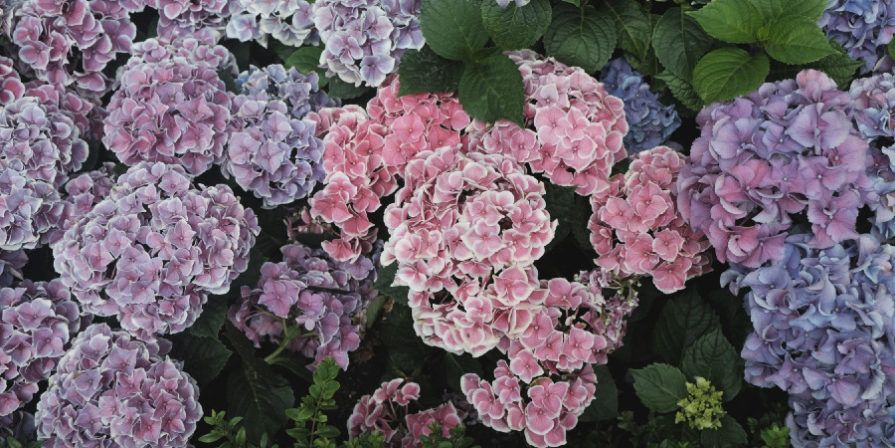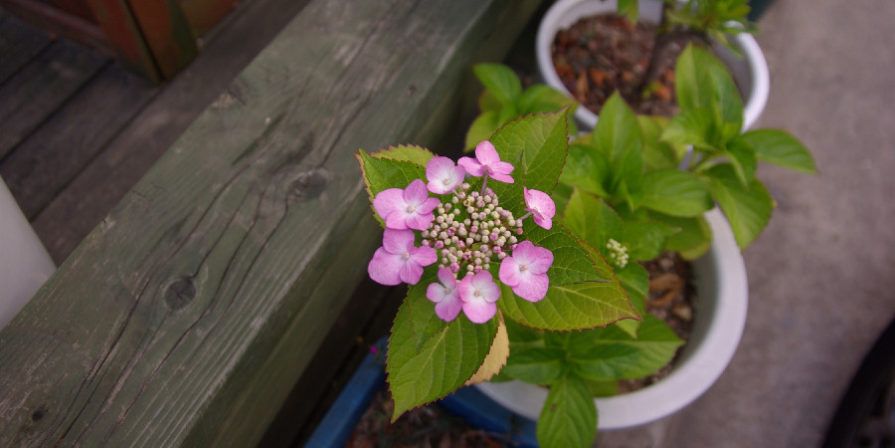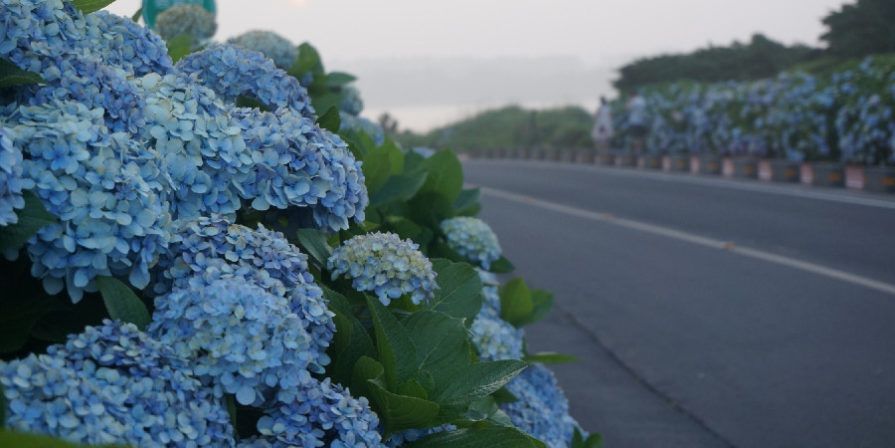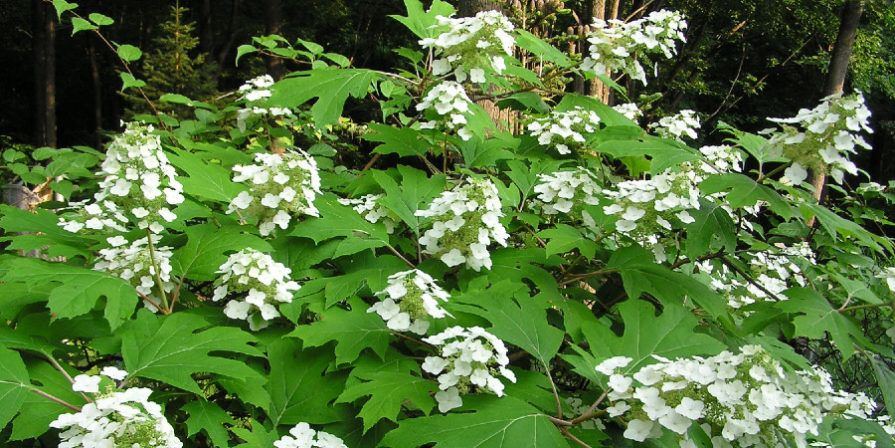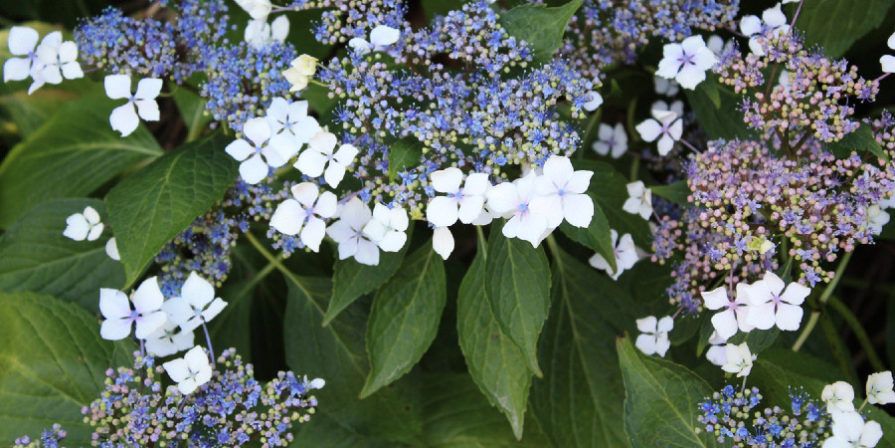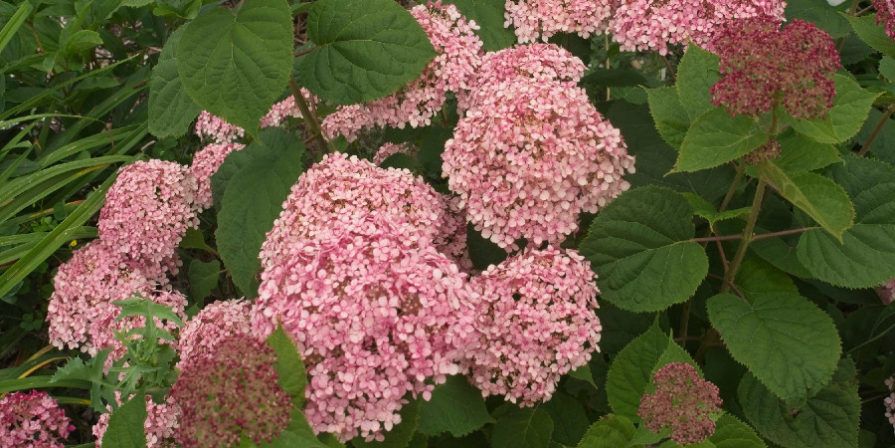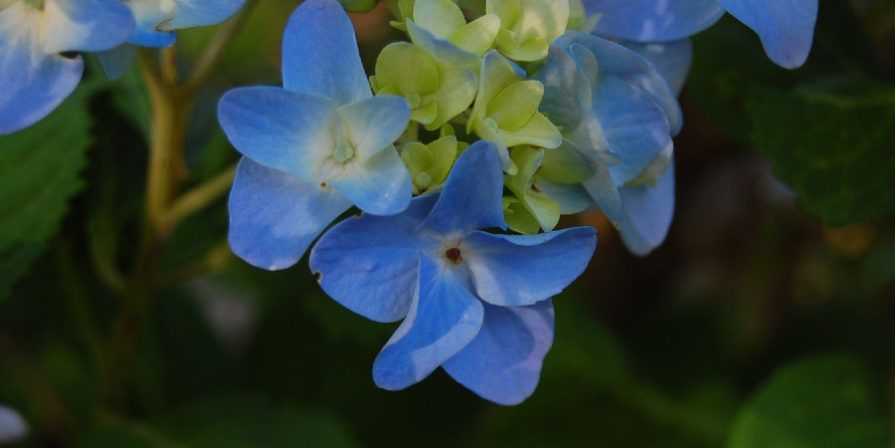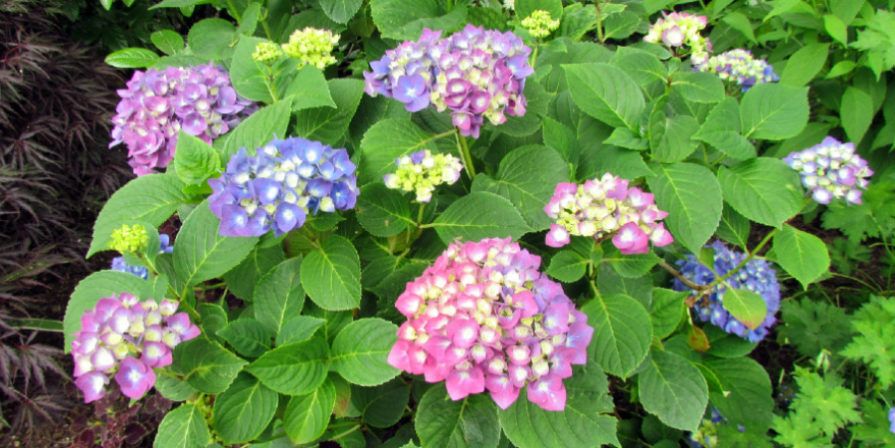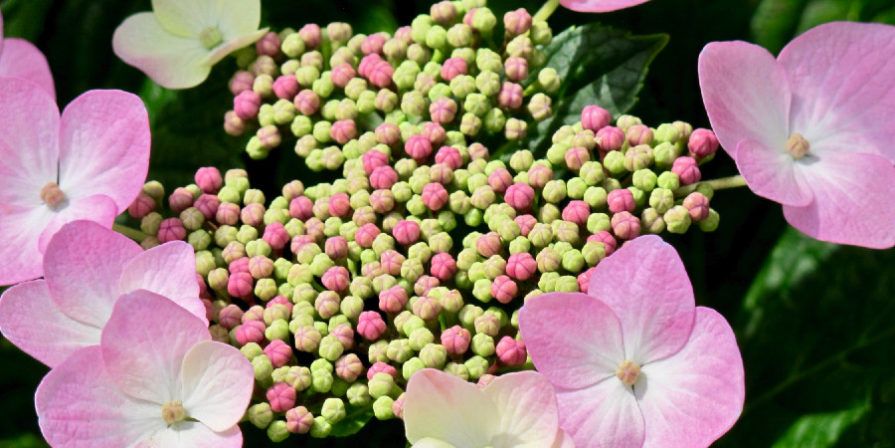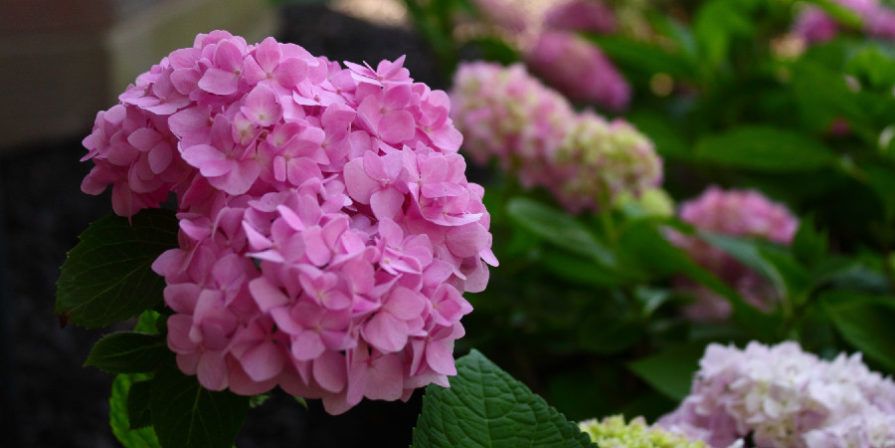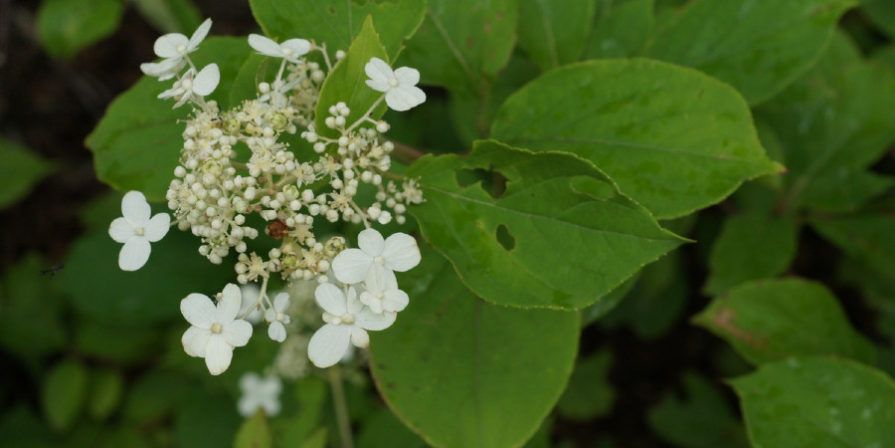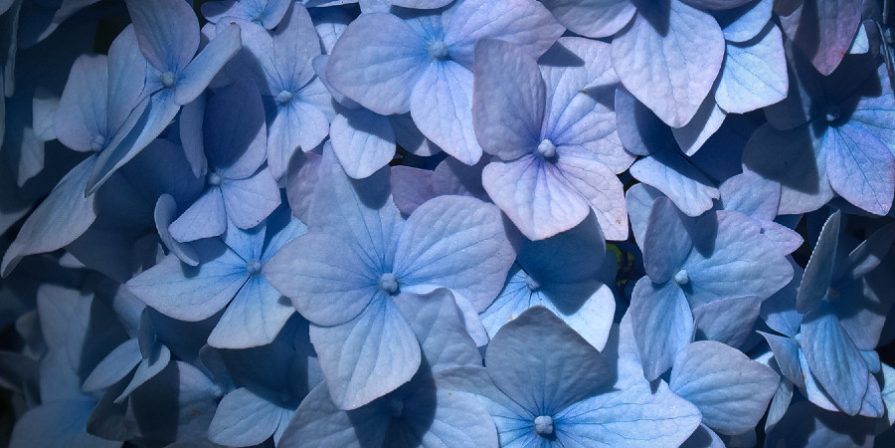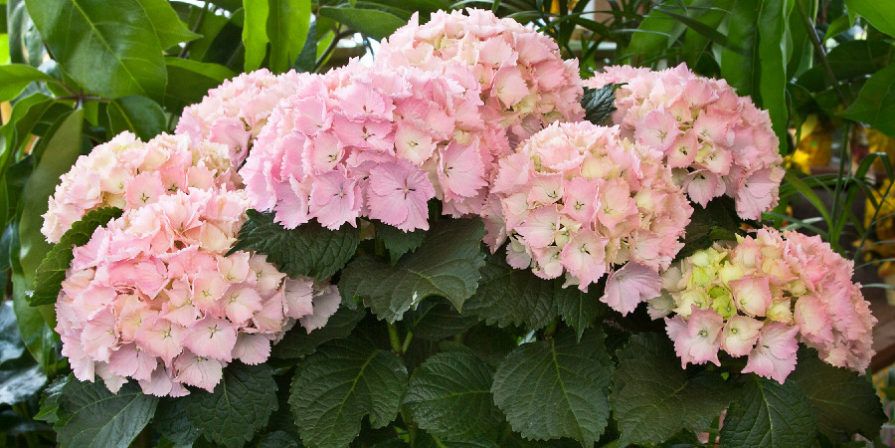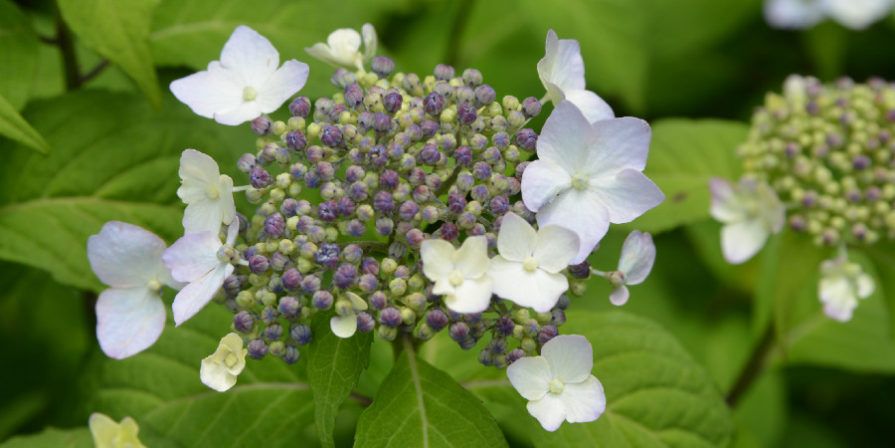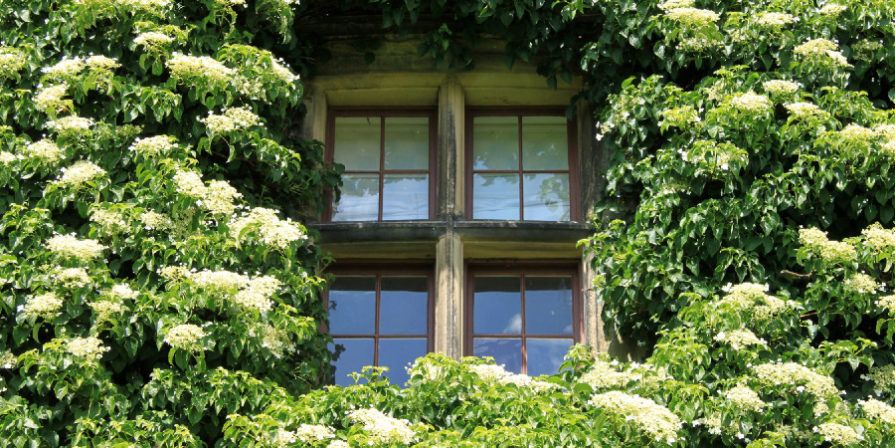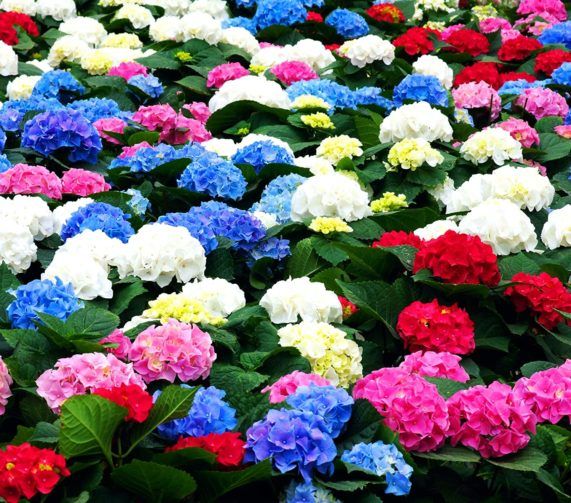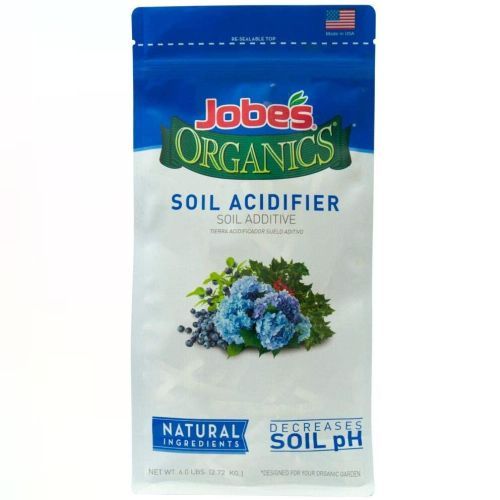Hydrangeas are spring and summer blooming bushes with large clusters of flowers that come in a wide range of colors from a pale green to a vibrant purple-ish blue. Some varieties reach up to fifteen feet in height while others are only as large as three feet when they reach full maturity.
Hydrangeas grow in hardiness zones 3 to 7 as perennials, meaning they come back year after year, with proper care. The flowers begin popping out their colors in spring and keep fresh and vibrant all summer long into early fall, when conditions are right. Interestingly, you can change the color of your hydrangea blooms, as well, using some special techniques regarding soil acidity.
When starting or switching up your garden, consider adding a hydrangea bush as a colorful accent. Here's everything you need to know about these beautiful plants.
Hydrangea Plant Details
AKA Hortensia
Scientific Names: The most common varieties of Hydrangea include Hydrangea macrophylla, Hydrangea paniculata, Hydrangea quercifolia, Hydrangea arborescens, Hydrangea petiolaris
Ease of Care: Easy to moderate, depending on the variety
Light: Most hydrangeas prefer partial sun, though they will tolerate partial shade or full sun, depending on the climate
Water: One inch of water per week during the growing season, with moist soil throughout
Temperature: As low as 32 degrees Fahrenheit for established plants, 45 degrees Fahrenheit for younger plants
Height: From three to 15 feet tall and 12 feet wide
Bloom time: Summer, with some varieties blooming earlier or later in the season, up until autumn
Growth Rate: Rapid at 25-inches or more per year
Pest: Aphids, scale, beetles, slugs, and fruit worms
Disease: Prone to botrytis blight, Cercospora leaf spot, powdery mildew, Virescence, and viruses.
Poisonous: Flower buds and leaves of the hydrangea are highly toxic to horses, dogs, cats, and, though not usually deadly, for humans, if eaten.
Benefits of Growing Hydrangeas
Hydrangea bushes offer stunning show appeal while being moderately easy to care for. The large globes of flowers keep blooming year after year through the summer months without requiring a lot of commitment from you.
Caring for Your Hydrangea
Though hydrangeas are fairly easy to grow and care for, there are certain things that will help them have the biggest, healthiest blooms and remain vibrant longer into the growing season.
Decide Between Seeds and Shrubs
If you're not that experienced with growing flowers from seeds, we'd recommend buying a pre-grown young shrub instead of attempting these from seeds, unless you're up for waiting two or three years before you have some small hydrangea shrubs you've grown from scratch.
Plant Hydrangeas at the Right Time of Year
Ideally, you'll plant your hydrangea shrubs when the temperatures are mild. They do best when planted in autumn, with early spring as a close second. Planting at these times will give the shrubs plenty of time to establish themselves with a healthy root system before they begin blooming.
Consider planting the shrubs during the coolest times of day to protect them from heat stress.
Plant Hydrangeas in the Right Place
Most varieties of Hydrangea do best in partial shade areas. Choose a spot where they'll have this shade while also have enough room to develop a full, healthy root system. Ideally, they'll get between five and six hours of morning sunlight, with dappled shade to follow.
If you live in warmer climates closer to the equator, your Hydrangeas will be happier in locations where they'll receive two to three hours of morning sunlight and patchy shade in the afternoon.
Plant Hydrangeas in the Best Soil
The best soil for hydrangeas is loamy, well-drained and contains an abundance of organic material (natural fertilizer, mulch, etc.). They like moist soil, but waterlogged soil will cause root rot for the plants. This root rot could kill your shrubs within a few weeks if not dealt with quickly.
Mix compost into the soil before you plant your hydrangeas to help ensure the soil is healthy and prepared for them.
Use Mulch and Fertilizer
Your hydrangeas will do best with both mulch and fertilizer applied to the soil. The mulch helps to keep the soil drained properly while breaking down to provide nutrients.
Fertilizer should be based on your specific hydrangea varieties. Every variety has different needs and benefits from different application timing. If you're able to, have a soil test conducted to determine the soil fertility.
- Oakleaf and panicle hydrangeas do best with two applications of the right fertilizer in April and June.
- Bigleaf hydrangeas prefer several light fertilizer applications in March, May, and June.
- Smooth hydrangeas do best with a single application of fertilizer in late winter.
Plant Your Shrubs With Care
Begin by mixing organic material into the soil. Then dig a hole a little bit larger than the pot your hydrangea is currently in. Add in a small amount of high-phosphorus fertilizer to the bottom of the hole. Remove the plant from the pot and loosen the roots slightly with your fingers.
Place the plant in the hole and cover the root ball. Be sure that the crown of the plant (the base of the stem that meets the soil) is level with the ground.
Cover the hole with soil, creating a small mound over the root ball. Water the plant immediately.
Be sure to check the soil frequently in the first few weeks, ensuring the soil doesn't dry out.
Water Your Hydrangeas Enough
These shrub flowers love their water, so be sure to keep them well hydrated, especially when you first plant them. Keep the soil moist but not wet.
Ideally, water your hydrangeas in the cooler part of the day. One solid soaking watering per day is better than several smaller waterings.
Indoor Hydrangea Care
If you're growing your hydrangeas indoors instead, there are a few things to keep in mind as you do so.
Choose the Right Pot
Most plants that you grow indoors require a container with a few drainage holes in them to prevent overwatering. Hydrangeas are especially sensitive to root rot, so it's especially important to make sure they have plenty of drainage holes in their pots.
If you wish to grow them individually, a pot about two feet larger in diameter than the pot the plant comes in is ideal. If you're growing multiple hydrangeas together, you may wish to consider a planter-style pot, long and deep.
Planting Your Indoor Hydrangea
Premix the soil with organic material before you place your hydrangea shrub into the pot. Leave about eight inches open at the top of the pot, then mix some high-phosphorus fertilizer into the soil. Next, place the hydrangea in the center of the container and fill the planter with soil, mounding some atop the root ball.
Leave approximately one inch of space between the soil and the top of the pot to prevent overflow when the plant is watered.
Maintain a Healthy Watering Schedule
Generally, they need watering once daily, twice if your home tends to have dry air. Gauge their need for water by sticking two fingers into the soil. If the soil is dry, add water.
Hydrangea Varieties
The four basic types of hydrangeas grown in the United States are:
Bigleaf Hydrangea
These are the most common type of hydrangea and typically best grown in zones 5 to 9.
Oakleaf Hydrangea
Image credits: Normanack via Flickr
These do best in warmer zones 5 and above. They can handle the heat of more intense summers.
Panicle Hydrangea
Image credits: Rexness via Flickr
These flowers can be grown in cooler climates 3 to 5. They're easy to grow and often reach up to 15 feet in height.
Smooth Hydrangea
Image credits: F.D. Richards via Flickr
This type of hydrangea is also known as snowball hydrangeas because of the shape and coloration of their blooms (white "balls"). They also grow well in colder climates.
Among these types of hydrangeas, there are many popular varieties to consider.
French Hydrangea
These are the traditional bigleaf hydrangea used in floral arrangements.
Mophead Hydrangea
Image credits: bobistraveling via Flickr
Mopheads are another bigleaf variety with large, round blooms.
Lacecap Hydrangea
Image credits: Bennilover via Flickr
These are smaller blooms with a lacy, delicate look to them.
Endless Summer Hydrangea
Image credtis: A Yee via Flickr
This unique variety of bigleaf can withstand colder temperatures into zone 4.
Peegee Hydrangea
These are often trained to look like trees, offering tall, thick stems and large blooms.
Blue Hydrangea
Image creidts: Tom Bech via Flickr
They come from the bigleaf family. The soil's acidity can influence their color. If you use acidic soil, they will turn blue, while alkaline soil can yield pink flowers.
Pink Hydrangea
These range in color from hot pink to blushing pink (nearly white) and are found in several different varieties of hydrangeas.
Mountain Hydrangea
Image credits: Michele Dorsey Walfred via Flickr
Mountain hydrangeas are the least common bigleaf variety with smaller flowers. They are extremely hardy and survive harsh winters.
Climbing Hydrangea
Image credits: Mike Finn via Flickr
This variety of hydrangea is actually a vine, making them quite different from the other varieties of hydrangeas. They're native to Japan, Siberia, and Korea and grow in Zones 4 to 8. The vines may grow as long as 80 feet in length.
Propagation
Take a cutting from a branch of the hydrangea bush. It should be 5-6 inches long. Ideally, take this cutting from a branch that did not blossom this year. Remove the lower leaves of the bottom nodes and cut the largest leaves to half their size.
Dip the cuttings into rooting hormone, if desired, and insert into damp sand or vermiculite, or another sterile medium. Then water the pot well and allow it to drain thoroughly. Keep the soil moist but not soggy. Cover the pot with plastic, avoiding the plastic coming in contact with the cuttings. Keep the cuttings in bright light, but never directly in the sun to avoid them from cooking under the plastic. It will take two to three weeks for the cuttings to form roots, depending on the temperatures and humidity.
Pruning
Technically, hydrangeas do not require pruning to grow healthy. If they are unruly or too large for the area, you may choose to prune them for aesthetics.
If your hydrangea variety blooms on new growth, then they should be pruned early in their growing season, which is typically early spring.
If your hydrangea variety only blooms on old growth, then you should avoid pruning them in spring, as their blooms are set before spring and you won't have any blooms this season. Instead, prune them immediately after their flowers fade.
Purchasing
The best places to purchase your hydrangea shrubs will be local nurseries and gardening stores. You can also find the shrubs at locations like Home Depot and other home goods and hardware stores. You may want to focus on nursery plants, however, as they tend to be more expertly cared for before you bring them home.
If you prefer to start from seeds, you can find seeds on sites like Amazon and those of your local nursery or gardening store.
Hydrangea Giant Snowball Seeds
50 mixed seeds for fast-growing hydrangeas in multiple colors. Expect 100 days to go from seed to blossom and five to seven months florescence, with each flower lasting for about two months.
Common Hydrangea Questions
How do you change the color of hydrangea blooms?
The pH and acidity levels in the soil can be tweaked to change that pink blossom into a deep blue shade. It takes a few months to make the color change but there are special products like soil acidifiers that make this process incredibly easy. Simply follow the instructions on the packaging.
Jobe's Organic Soil Acidifier
Organic soil acidifier for altering the color of your hydrangeas from pink to blue
Why aren't my hydrangeas blooming?
If your hydrangea shrubs aren't blooming, it's usually because the shrubs have been pruned back too much or the bush has died back because of cold weather. If this is the case, it is unlikely the plant will bloom this season. It will continue to grow and thrive, but the blossoms won't come back until there's enough old growth to give the blossoms stability for growing.
How do I winterize my hydrangeas?
Before the first hard freeze hits, add six to eight inches of mulch around the plants. If there is old growth on the plant, trim back the plant heading into winter, making sure not to cut down to the ground. Remove dead, weak stems, and trim the bush to a desirable size.
Build a cage of four wooden stakes sunk into the ground around the plant, then wrap it with chicken wire. Fill the cage with pine needles, leaves, or similar natural insulating organic material.
If your hydrangeas are in pots, consider bringing them indoors before the first frost.
Why are my hydrangeas drooping?
If you notice your hydrangeas drooping, they're probably not getting enough water. Make sure you're watering them every day with deep watering a couple of times per week to help them recover and stay healthy. This is especially necessary for any potted hydrangeas.
If you're looking for more flowering plants to add to your garden, also check out our Philodendron plant guide.

